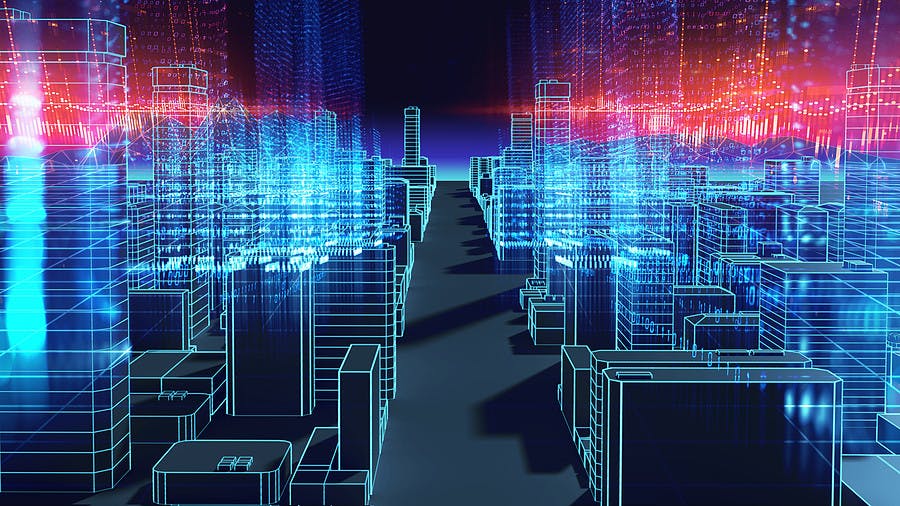COVID-19 has created a massive shift in the employee experience as companies have implemented remote working policies for employees. Numerous organizations already have well-established policies in place, but many others are facing new challenges.
While some companies can’t wait to resume activity at the office, others have come to enjoy the flexibility and savings associated with remote work. Sure enough, Shopify, Twitter, Facebook, Square, and other employers have recently announced that they are going to sustain their remote working policies over the long-term.
What does 100% remote work mean for these businesses?
It means that office buildings and cubicles will no longer define the employee experience. A company’s digital presence will (since all interactions between co-workers will be digitally mediated).
This raises an important question: How should organizations focus on — and what exactly are the components of — digital real estate as a means to shape the new employee experience?
The Enterprise Application Experience
The software that large organizations use to run their operations, manage their people, and control their finances plays a big part in the employee experience because of the technology’s self-service functionality.
Today’s workers have less time and fewer resources to do their jobs; they are desperate to improve inefficiencies in their workflows. If they encounter applications that slow them down, you can guarantee frustration and a compromised employee experience.
If you can make tasks and workflows within your workplace tech applications more efficient, then your people will thank you. They’ll be able to focus their time and energy on their actual work.
Consider how your existing enterprise applications currently work:
- Are they mobile-optimized?
- Do users need to log into multiple systems?
- Do they require user training and support?
- Are transactions efficient?
- Do they deliver a digital experience that’s on brand?
If your existing applications present any of these roadblocks for employees, consider investing in an employee experience platform. All of your applications can be accessed in one streamlined and mobile-optimized platform, which reduces training and support for workers, while simultaneously cutting IT and HR costs.
Additionally, since employees no longer have a branded physical experience, you’ll want to ensure that your brand is woven into your platform or applications in meaningful ways.
The Collaboration Tools Experience
When thinking about remote work, it’s reasonable to be concerned about employee and client interactions. For most of us, collaboration with customers and co-workers consumes a significant part of our workday. It’s through collaboration activities that we obtain feedback, discuss goals and objectives, and build professional relationships. For many client-facing employees, collaboration is especially important as it is a critical step in the sales and onboarding process.
With remote working as the new normal, companies have had to rely completely on digital applications to keep people connected as they remain physically apart. Instead of spending time in meeting rooms, employees are now collaborating with others using applications such as Outlook, Slack, Microsoft Teams, and Zoom. Since this is the only means of interaction, these applications remain continually open on employees’ devices.
However, to ensure a productive collaboration experience, it’s important that these tools are fully optimized. Employees shouldn’t have to constantly switch between applications and browsers to accomplish work. Instead, organizations should enable streamlining of content across applications to create efficiency.
For instance, many of us might notice that we are spending tons of time in our corporate messaging tool. But it can be cumbersome to switch between this platform and other applications to fill out timesheets or expense approvals. Save your employees time and hassle by integrating these HR applications into their collaboration tools.
The Job-Specific Application Experience
We all have applications that we rely on daily to do our jobs. If you’re a graphic designer, you might rely on Photoshop or Illustrator to complete your work. If you’re an engineer, then you might spend most of your time in Jira or AWS.
Prior to COVID-19, we could easily tap a teammate on the back if we ran into issues with these day-to-day tools. With experienced colleagues sitting next to us, it was easy to overcome roadblocks and discover new tips to better optimize these platforms.
However, with mandated remote work, some employees might find that interactions with these tools have become more challenging. Perhaps there was a new update or change to the user interface — what was once easy to navigate has now become more of a hassle as we learn to operate it on our own.
To ensure that your team still has a positive experience with everyday work applications, be sure to develop a way to easily share best practices for these platforms. For instance, you could start a dedicated channel in your messaging tool where teammates can request help or share insights. Or perhaps you might develop a folder where your team can share tutorials and other helpful resources.
If you create a way for employees to easily share tips and gain advice with these common tools, then they can still have a good experience with the applications that they depend on the most.
Final Thoughts
There will no longer be in-person standup meetings, a cozy office setup, and catered team lunches to support the employee experience and build connection. Your employees’ digital experience will now be their only experience.
And you never know — you might be surprised to discover that your company thrives in a remote environment. Maybe your organization will join the tribe of companies that sustain remote working policies over the long-term.
